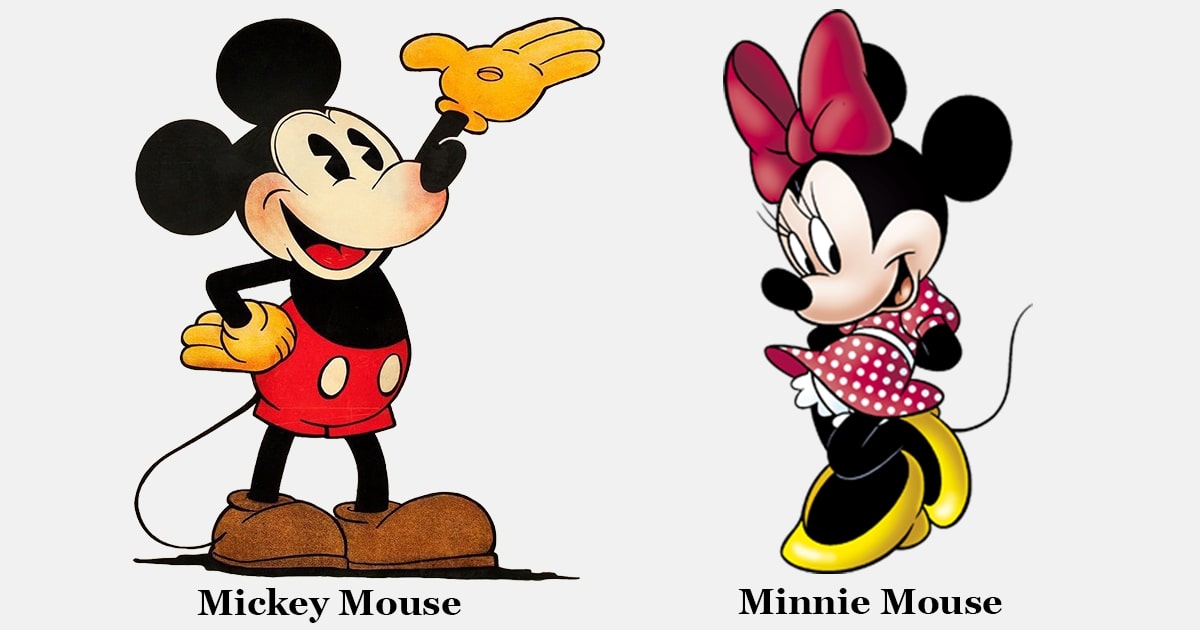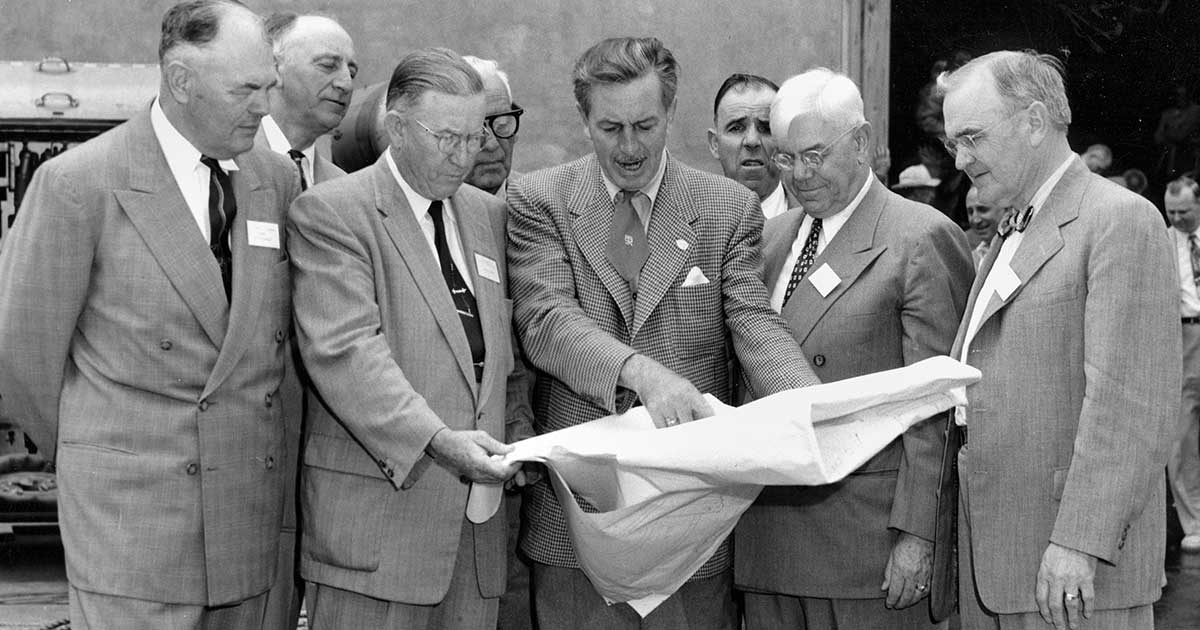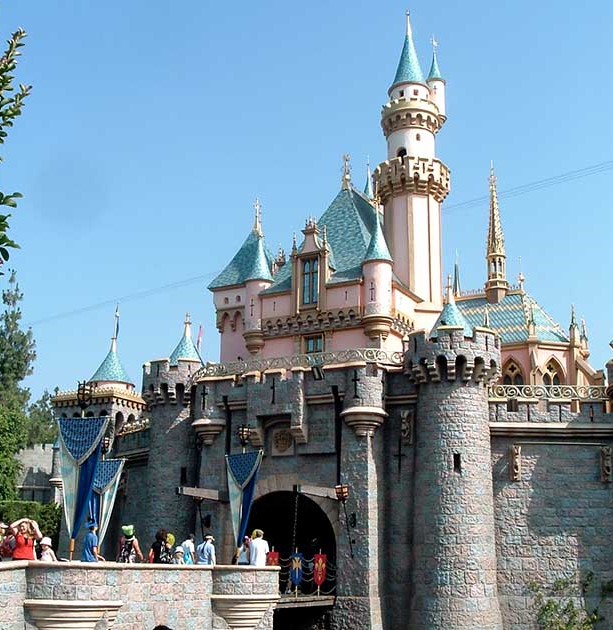Walt Disney, the entertainer
By Kiron Kasbekar | 30 Jan 2024

The name Walt Disney conjures up images of animation, iconic characters that filled our childhoods with laughter and wonder. Those days we didn’t even know of a person with that name, or a company with that name – but we knew of their products – the Walt Disney comics and the Walt Disney films.
And then there were the endearing toys and the amusement parks with which the name was associated.
When children (and adults) read the comics or watched the cartoon movies and giggled and laughed, and when they acquired a Disney toy, they still didn’t think of the man, Disney. Only when they visited a Disneyworld would they see a few large images of Walter Elias Disney looking out at the world with a benign gaze. He was the man behind all those comics, videos, toys and amusement parks.
Walt Disney, born in Chicago, USA, on 5th December, 1901, is a name synonymous with the world of entertainment. He was a visionary animator, filmmaker and entrepreneur who revolutionized cinema as well as comics. His impact on these fields is immeasurable as he transformed them into powerful mediums of imagination, storytelling and artistic expression.
Synonymous with entertainment
Walt Disney was the fourth of five children born to Elias Disney, a farmer and building contractor, and Flora Call Disney, a former schoolteacher. The Disney family moved frequently when Walt was a child, eventually settling in Marceline, Missouri, in 1906. It was there that he first developed a love for drawing, inspired by the natural beauty of the countryside and the stories his father would tell him.
In 1911, the Disney family moved to Kansas City, Missouri, where Walt began his formal education. It was during this time that he started taking art classes and developing his skills as a cartoonist. After graduating from high school in 1917, Walt pursued a career in art, taking on various jobs as a commercial illustrator and cartoonist.
In 1920, Disney’s love for art and animation led him to Hollywood, where he embarked on his career in animation. He initially worked for the Kansas City Film Ad Company and later joined the Universal Pictures studio as a cartoonist.
It was during his time at Universal that he created his first successful animated character, Oswald the Lucky Rabbit. Unfortunately, Disney lost the rights to Oswald due to a contract dispute, a setback that would shape his determination and ambition in the years to come.
Now just think – had Disney not lost the rights to Oswald, would he have created Mickey Mouse? I do not believe in fate, but I do believe in grit and determination, and that was just what Disney had in plentiful.
On his own, character building
So he set out on his own. And succeeded hugely. But before he succeeded, he stumbled.
Disney was very impressed by the silent films of those days, created by Winsor McCay, featuring the animated character Gertie the Dinosaur. He decided this was the way forward for him.

In 1920, Disney started his own animation studio, called Laugh-O-Gram Studio, in Kansas City, and produced a series of animated shorts called ‘Laugh-O-Grams’. Useful experience, but they did not make money, and the studio filed for bankruptcy in 1923.
The young Disney was undeterred, and moved to Hollywood, California, with his brother Roy O. Disney. There, they co-founded the Disney Brothers Studio. That studio would eventually evolve into The Walt Disney Company.
Their first productions were a series of live-action/animated short films called the ‘Alice Comedies’, featuring a live-action girl named Alice, who interacted with animated characters. This series marked the beginning of Disney’s journey into animation.
Destination Hollywood
In July 1923, at the age of 21, Disney moved from New York, then the center of the cartoon industry, to Hollywood because his brother Roy was there, convalescing from tuberculosis there. Disney also harbored ambitions of becoming a live-action film director. He tried to sell Alice’s Wonderland there, but didn’t succeed. And then he heard from New York film distributor Margaret J. Winkler, who signed a contract for six Alice comedies, with an option for two further series of six episodes each.
Disney and Roy formed the Disney Brothers Studio to produce the films; that studio eventually became The Walt Disney Company — they persuaded actress Virginia Davis and her family to relocate to Hollywood to continue production. Davis was on a $100-a-month contract.
In July 1924, Disney also hired Ub Iwerks, and persuaded him too to relocate from Kansas City to Hollywood. In the year 1926, the brothers created the first official Walt Disney Studio.
By 1926, Winkler’s husband, film producer Charles Mintz, had taken over distribution of the Alice series. Relations between Disney and Mintz were not very good, and after the series had run until July 1927, Disney had tired of it; he wished to shift from mixed format films to ones with full animation.
.jpg)
Then Mintz wanted new material; so Disney and Iwerks created Oswald the Lucky Rabbit. Disney expected to negotiate a bigger fee for the Oswald series but found, to his disappointment, in February 1928, that Mintz wanting to reduce the payments.
Things got out of hand when Disney found that Mintz had persuaded several of Disney’s artists to work directly for him, including four of the key members of the art team. And Disney couldn’t do anything about it. Universal owned the Oswald copyrights. One thing led to another, and Disney, who had lost most of his animation staff to Mintz, except Iwerks, decided to quit the arrangement altogether.
That’s how Mickey Mouse was born.
Mickey Mouse propels Disney to stardom
During 1928–1934 Disney and Iwerks worked hard to replace Oswald, and developed Mickey Mouse. It is said that the character was based on a pet mouse Disney had adopted; but we don’t know for sure.
Disney had first decided to name the character Mortimer Mouse, but his wife Lillian argued that the name Mortimer was too pompous. She suggested Mickey as a friendlier name, and the suggested was accepted. The rough sketches were changed to reflect the Mickey Mouse character.
The mouse began to speak in Disney’s voice; Mickey Mouse did that until 1947. One Disney employee put it very succinctly, saying that while Ub created Mickey’s physical appearance, but Disney gave Mickey his soul.

Mickey Mouse brought Disney the big bucks. Launched in 1928 along with his girlfriend, Minnie Mouse, this cartoon mouse propelled Disney to superstardom. Mickey’s infectious grin and expressive personality resonated with audiences, solidifying his status as a global icon.
Mickey was followed in 1930 by his pet Pluto, the lovable yellow-orange dog with long ears and a thin black tail. And then came Donald Duck in 1934. This was a white duck with who wore usually wore a sailor’s shirt and cap, anachronistically with a red bow tie. Donald Duck is among the Disney’s ‘big three’ along with Mickey Mouse and Goofy.
.jpg)
After that Disney Studios churned out a steady stream of beloved shorts, from Silly Symphonies, which featured musical themes, to classic tales like ‘Three Little Pigs’.
These creations showcased Disney’s mastery of storytelling, combining slapstick humor, heartwarming charm, and groundbreaking animation techniques like synchronized sound and multiplane cameras.
New directions
Then Disney pushed the boundaries further. His ambition took him beyond short films, and he embarked on a daring project – the world’s first full-length animated feature, ‘Snow White and the Seven Dwarfs’. Snow White, made in 1937, was Disney’s first full-length animated feature film, which forever etched its place in cinematic history.
The film was a monumental undertaking, and first met with skepticism and financial strain. Yet, Disney’s unwavering belief in his vision paid off. Snow White became a box office smash hit, proving that animation could hold its own against live-action films and captivate audiences of all ages.
Snow White paved the way for future animated classics which Disney launched – Pinocchio in 1940, and Dumbo in 1941. Each of these pushed the boundaries of storytelling and technical mastery, and consolidated Disney’s position as a major Hollywood player.
While Disney’s movies were doing well, the world was not. In 1939 the world had been plunged into war, the Second World War, and Disney Studios had to adapt itself to the changed times. It produced training films and propaganda shorts for the American government even as it churned out entertainment like Dumbo and Saludos Amigos.
.jpg)
Disney also revolutionized the comic book industry. In 1937, he launched Mickey Mouse Magazine, featuring comic strips starring his beloved characters. This publication laid the groundwork for the modern comic book industry, establishing a format that would influence generations of artists and storytellers.
One of Disney’s most significant contributions to comics was the creation of the comic strip ‘Mickey Mouse’ in 1930. Drawn by American animator, cartoonist, character designer, inventor, and special effects technician Ub Iwerks, this comic strip introduced Mickey and his friends to a broader audience and popularized them.
Prolific fifties and after
The post-war years saw an explosion of creativity, and Disney Studios introduced iconic characters like, further expanding the firm’s animated universe. Its feature films like Cinderella (made in 1950), Peter Pan (1953), and Lady and the Tramp (1955), continued to enchant audiences. Winnie the Pooh was created in 1966.
Cinderella was based on the fairy tale by that name written by the 17th century French author Charles Perrault, who also wrote other fairy tales, including The Sleeping Beauty, Little Red Riding Hood, Puss in Boots, and Bluebeard.
It also produced educational documentaries like True-Life Adventures, showcasing Disney’s commitment to diverse storytelling.
.jpg)
Disney’s colorful ensemble of characters, from the grumpy charm of Donald Duck to the mischievous antics of Goofy, each creation resonated with audiences, sparking laughter and wonder.

These characters transcended the screen, venturing into the realm of comic books. Disney’s comics, brimming with vibrant illustrations and engaging narratives, became a popular medium, extending the reach of his beloved characters and further solidifying their place in pop culture.

Disney’s place as a family entertainment powerhouse was now unshakeable. But Walt Disney’s was looking beyond the silver screen. He yearned to create an immersive experience, a place where his animated worlds could come to life. This dream materialized in 1955 with the opening of Disneyland, the first-ever theme park dedicated to his characters and stories. Disneyland revolutionized the amusement park industry, offering a fantastical escape into the Disney universe, complete with rides, shows, and interactive experiences.
Walt Disney wanted to touch everything around him with his magic wand. And his company has managed to do just that. From toys and school bags and to watches and aeroplanes – all sorts of things have carried images of Disney characters and themes.
Disney was not just an animation artist, he was a visionary who when it came to diversifying his entertainment empire.
In 1932, Disney signed a licensing agreement with King Features Syndicate to distribute the Mickey Mouse comic strip to newspapers across the United States. This move expanded the reach of Disney’s characters and stories beyond the screen and into the pages of newspapers, making them a part of the daily life of countless readers.
The success of the Mickey Mouse comic strip led to the creation of other Disney-themed comic strips and books, featuring characters like Donald Duck, Pluto, and Goofy.
In 1938, Disney launched the first issue of ‘Walt Disney’s Comics and Stories’ through a licensing agreement with Western Publishing. This comic book series became immensely popular and featured a mix of original stories and adaptations of Disney’s animated films. Walt Disney’s Comics and Stories went on to become one of the longest-running comic book series in history, continuing to entertain readers for decades.

Disney’s impact on comics extended beyond the printed page. In 1952, the ‘Disneyland’ television series premiered on ABC, and it featured animated segments that introduced viewers to the world of Disney characters and stories. These segments, known as ‘Disneyland’ or ‘Walt Disney Presents’, further cemented Disney’s presence in the world of television and pop culture.
The Disney theme park phenomenon also began during this period, with the opening of Disneyland in Anaheim, California, in 1955. The park was an immersive experience where visitors could step into the worlds of Disney’s animated films and meet their favorite characters.
The success of Disneyland led to the creation of Walt Disney World in Florida, Tokyo Disneyland, Disneyland Paris, Hong Kong Disneyland, and Shanghai Disneyland, transforming Disney’s creations into real-life experiences that millions of people continue to enjoy.
Disney’s ambition extended beyond animation. In 1955, he realized a lifelong dream with the opening of Disneyland in Anaheim, California, the world’s first theme park. This revolutionary concept melded entertainment, technology, and storytelling, providing visitors with a fully immersive experience. Disneyland’s success paved the way for the creation of Disney World in Orlando, Florida, and numerous other Disney theme parks worldwide.
Negative traits
.jpg)
Walt Disney: The Triumph of the American Imagination, a biography written by Neal Gabler, which was published in 2007, challenges the widely held image of Walt Disney as a cheerful entertainer. Instead, it paints a portrait of a complex and often troubled as well as troubling individual.
Behind the façade of the genial uncle telling whimsical stories, writes the book, there was a man battling his inner demons, a man who preferred to remain isolated and was prone to depressive episodes. What was worse were allegations of his harsh treatment of employees and close associates.
Walt Disney’s carefully cultivated public image as a kindly grandfatherly figure begins to crumble under Gabler’s scrutiny. What we see is the picture of a man who, while undeniably talented, experienced significant personal struggles and exhibited questionable behavior towards others.
Disney’s relationship with his father was strained, eventually turning resentful. He even missed his father’s funeral due to a business trip, a decision he reportedly never discussed openly. Additionally, the pressure of early career struggles and personal life challenges, including his wife’s miscarriages and their difficulty conceiving, led to a mental breakdown in 1931.
However, the complexities of Disney’s personality didn’t end there. He displayed a controlling and often cruel side towards his employees, subjecting them to humiliating public reprimands. Even his brother Roy, who served as the financial backbone of the company, wasn’t spared. During a meeting discussing the Fantasia soundtrack, Roy suggested incorporating more popular music, only to be mocked and dismissed by Walt, who reportedly told him to “go back down and keep the books.”
While Disney’s creative vision and achievements are undeniable, it’s important to acknowledge the multifaceted nature of his personality and the impact his actions had on others. Gabler’s book offers a valuable counterpoint to the sanitized image often presented, urging a more nuanced understanding of the man behind the magic.
According to the biography, also Disney was vehemently anti-communist during the mid-20th century. The author suggests that Disney used his storytelling skill as a tool to exert control and maintain order, masking a deeper desire for domination.
One particularly controversial claim surrounding Disney was his alleged anti-Semitism. While Gabler refutes this accusation, he acknowledges that Disney’s association with Leni Riefenstahl, Hitler’s filmmaker, shortly after the Kristallnacht pogrom remains an unsettling detail.
Adding to the complexities of Disney’s character, the book recounts a labor strike at his studio in 1941, fueled by his refusal to recognize individual animators’ contributions and his harsh treatment of employees. It culminated with his controversial testimony before the House Un-American Activities Committee, where he wrongly accused the League of Women Voters of communist activity.
Those negative aspects of this remarkable man are not known widely enough, and are therefore easily ignored in the light of his stupendous achievements.
Top of the heap
Walt Disney passed away in 1966, leaving behind a legacy that continues to inspire. His vision, imagination, and unwavering dedication to quality laid the foundation for a global entertainment empire.
The Walt Disney Company blossomed under his successors, expanding into live-action films, television, music, and merchandise. Today, Walt Disney Company is a cultural behemoth, owning parks, resorts, and media networks around the world, keeping Walt’s dream alive for generations to come.
When I say ‘cultural behemoth’, I am not exaggerating. The consolidated revenues of the Walt Disney Company were 82.72 billion. Right there, at the top of the heap!



















